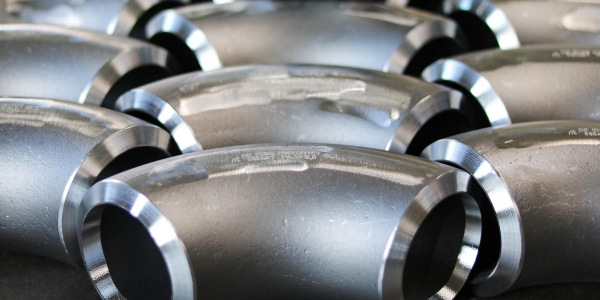Elbows are categorized based on their curvature radius, distinguishing between long radius elbows and short radius elbows. A long radius elbow has a curvature radius equivalent to 1.5 times the outer diameter of the pipe, denoted as R=1.5D. Conversely, a short radius elbow features a curvature radius equal to the outer diameter of the pipe, expressed as R=D. Here, D represents the diameter of the elbow, and R denotes the curvature radius. In this article, Union Steel Industry will introduce you to the main differences between long and short radius elbows.
Contact us Email:sales@union-steels.com

Bending radius:
Long Radius Elbow: Has a larger bend radius, usually 1.5 times the pipe diameter or greater. This means that the distance from the center of the elbow to the bending axis is longer.
Short Radius Elbow: Has a relatively small bend radius, usually 1 times the pipe diameter. This results in a tighter shape and sharper bends.
Appearance and shape:
Long radius elbow: Appears flatter in appearance, closer to a curved curve. Because the bending radius is large, the overall shape is relatively long.
Short radius elbow: It looks more compact in appearance and the curve is sharper. The overall shape is relatively short.
Effects of fluid flow:
Long radius elbow: Due to the larger bending radius, the fluid flows more gently in the elbow and the flow resistance is relatively small. This makes long-radius elbows more suitable in some applications that require smooth fluid flow.
Short Radius Elbow: The bend is sharper and the fluid will experience greater resistance within the elbow, so short radius elbows may result in some energy loss and flow turbulence.
Application scenarios:
Long radius elbow: Usually used in situations where it is necessary to reduce fluid resistance, reduce energy loss and require smooth fluid flow. For example, in the chemical, oil and gas industries.
Short Radius Elbow: Due to its compact shape, it is often used where space is restricted or where fluid flow turbulence does not negatively impact the system.
Steel pipe elbow is a key parts in a piping system for to change the fluid flow direction. It is used to connect two pipes with same or different nominal diameters, and to make the pipe turn to a certain direction.
According to fluid direction of the pipelines, elbow can be divided into different degrees, such as 45 degree, 90 degree,180 degree, which are most common degrees. Also there has 60 degree and 120 degree, for some special pipelines.
Elbows are split into two groups, if the radius is the same as pipe diameter (Center-to-Face dimension of 1.0 X diameter ), it called Short Radius Elbow (SR elbow) used normally for low pressure and low speed pipelines or in tight areas where clearance is the main issue. If the radius is larger than pipe diameter (Center-to-Face dimension of 1.5 X diameter) then we call it a Long Radius Elbow (LR Elbow) used for high pressure and high flow rate pipelines.
As per the connection with pipe, elbows could be classified as Butt Welded Elbow, Socket Welded Elbow and Threaded Elbow. According to the valve body material, it has stainless steel, carbon steel and alloy steel elbow.
IF YOU HAVE ANY INQUIRY, PLEASE DON'T HESITATE TO CONTACT US IMMEDIATELY
Email:sales@union-steels.com

 English
English Español
Español




 Tel : +86-18565811709
Tel : +86-18565811709 Email :
Email : 

 News
News




